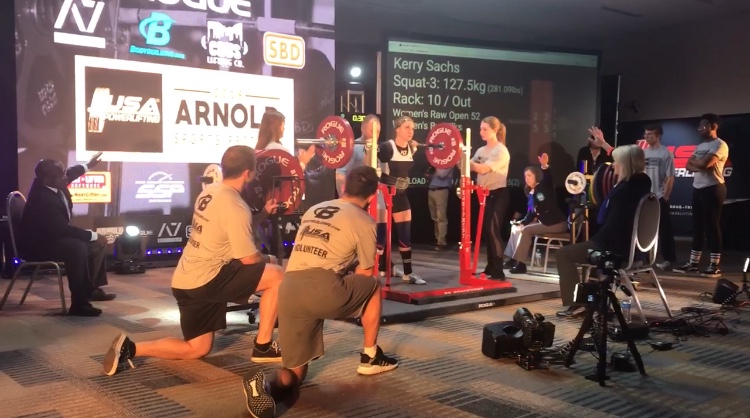Written by: Kevin Cann
I have this conversation a few times now in the last couple of weeks. There seems to be some misunderstanding in regard to the execution of the squat and how to involve the most muscle mass.
There seems to be this trend to drive the knees forward and not out to initiate the squat. One person told me that the argument was that it allows us to use our hip adductors more. That thought process is correct as our hip adductors are the strongest hip extensor at the bottom of the squat, but this is a serious misunderstanding of how to actually use the adductors.
The adductors, along with the hamstrings, play a pivotal role in the powerful hip extension movements, especially when we are attempting to utilize the stretch shortening cycle (SSC) for that elastic rebound. Think for a minute about what athletes tend to pull while sprinting. It usually is a hamstring or a groin (adductors).
We absolutely want to utilize this larger muscle that has very good leverage to extend the hip in the bottom position of the squat. A study by ML Benn and colleagues in 2018 titled “Adductor Magnus: An EMG investigation into proximal and distal into portions and direction specific action” showed that the primary role of the adductor magnus was hip extension.
The adductors’ origin is on the pubis and they insert on the femur, with the gracilis inserting on the tibia. Due to this attachment at the tibia, the gracilis will actually help out in external rotation of the hip. This is what we are accomplishing when we push the knees out to initiate the squat.
As we externally rotate the hips by pushing our knees out to descend in the squat, the adductors are getting longer. When we come up, they contract and get shorter. This shows that they play a major role in the hip extension of the squat.
However, if the knees come in on the way up, but without the barbell moving up, they contracted without moving the weight. The load is too heavy for them, meaning they are weak in this movement.
Usually you will see the lifter pitch forward and create moment arms in other places to successfully complete the repetition. We even see this technical breakdown on a few very elite, world level lifters.
I see people trying to place bands around their knees when they squat to fix this issue, and they are not going to be effective. The hip external rotation does not change as we descend into the bottom position of the squat. The lifter is just maintaining that position. Those muscles are not lengthening and then shortening.
It seems intuitive to think that my knees come in, or adduct, so the adductors must be strong, and the muscles that keep them out (abductors) must be weak. This makes logical sense based off of the name of the muscle groups, but the adductors are probably poorly named if hip extension is a primary role.
My knees would cave in when I would squat with Sheiko as my coach. He told me it was due to weak adductors. I thought perhaps there was an error in translation. I thought it had to be my abductors he meant.
I looked it up and saw an article that Bill Starr wrote. Starr was a weightlifter of the 1960s, wrote for magazines, and a collegiate strength and conditioning coach. He had briefly mentioned it was weak adductors, but everyone else was saying abductors on the internet.
That is when I decided to use my master’s degree and think about it for myself. I realized the length changed in the adductors but not the abductors, and it began to make a lot more sense to me. I asked how to strengthen them best, and Sheiko said to turn my feet out to 30 to 40 degrees which will target them more. This is also backed up by EMG studies, and the fact that the adductors aid in that external rotation of the hip which is what happens when we turn our feet out.
The first time a lifter keeps their knees out as they squat, they will be sore in the adductors the next day. If you tear a groin muscle, rehab will probably consist of close stance squats as it takes pressure off of the adductors. The closer stance, knees forward squats, do not utilize the adductors to their fullest capacity since the length does not change and if it does it is very very minimal without the external rotation of the hip.
We want to utilize the most muscles, and the largest muscles to squat the most weight. This absolutely includes the adductors with the hamstrings, glutes, and quads. The best way to do that is to push the knees out to eccentrically load the hamstrings and adductors as this will create stability in the bottom position and allow the lifter to utilize the SSC. A wider stance allows us to utilize more glutes and decrease the ROM of the lift.

